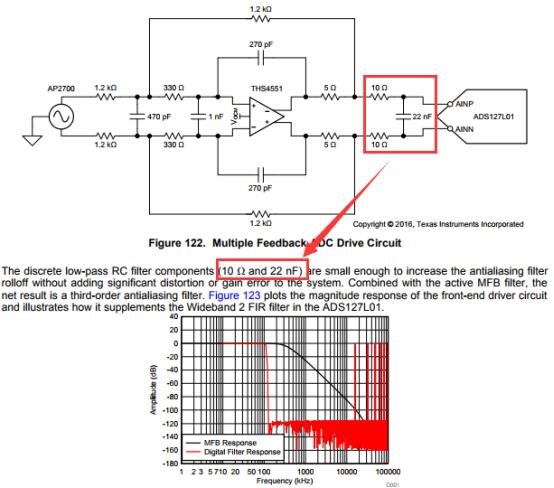Following the data sheet of ADS127L01(Figure below), We designed the MFB filter. The reference design is 10R and 22nF, so ithe cut-off frequency is 1/(2 * pi * R * C) = 723798.5Hz. Since our sampling frequency is 128K, we want to design a cutoff frequency at 100kHz following your recommendation. So, we change parameter to 160R and 10nF, which would generate a cutoff frequency at 1/(2 * pi * R * C) =100kHz
However, the test result is not as designed. The input signal amplitude is 0.224V, The input frequency and output signal’s amplitude can be seen at next table, the cutoff frequency is acutally at 10kHz, not 100kHz.
10KHz - 0.222V
20KHz - 0.209V
30KHz - 0.188V
40KHz - 0.180V
50KHz - 0.164V
60KHz - 0.149V
70KHz - 0.136V
80KHz - 0.124V
90KHz - 0.114V
100KHz - 0.105V
110KHz - 0.098V
120KHz - 0.091V
How select the resistance and capacitance of this low-pass RC filter to achieve 100kHz cutoff frequency?



